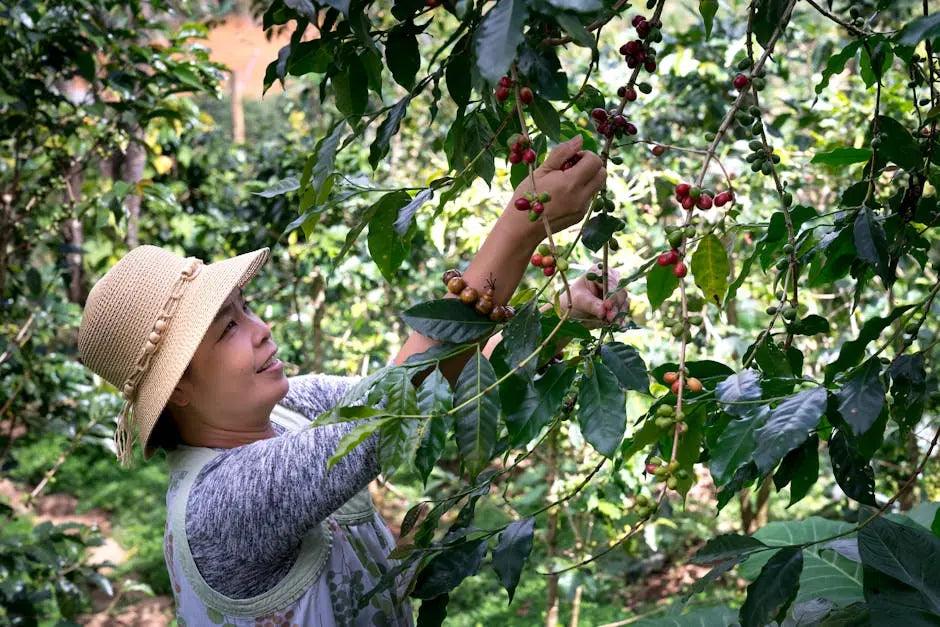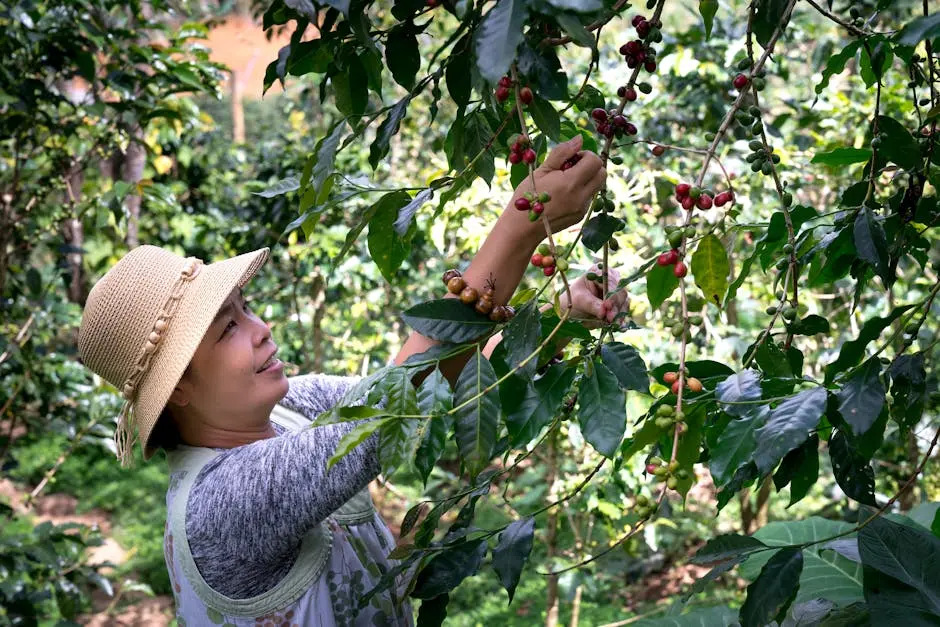Coffee lovers often savor the rich aroma and flavors of their favorite brews, but few understand the intricate journey it takes for handpicked coffee to make its way from the farm to your cup. This blog will take you through the fascinating process of coffee cultivation, harvesting, processing, and ultimately brewing, highlighting the care and dedication that goes into producing a perfect cup of coffee.
The Origin of Handpicked Coffee
The story of handpicked coffee truly begins in the lush, verdant valleys of coffee-growing regions. Countries like Colombia, Ethiopia, and Brazil each have rich traditions of coffee cultivation that are steeped in history and culture. These regions offer the perfect climate, where volcanic soils and ideal rainfall create optimal growing conditions. In these environments, coffee plants thrive, bearing cherries that are packed with flavor, benefiting from the care of knowledgeable farmers who understand their land like the back of their hand.
In this magical interplay between nature and nurture, specific coffee varietals emerge, each with unique flavor profiles. For instance, Ethiopian coffee is often celebrated for its bright acidity and floral notes, while Brazilian coffee tends to be smoother and more chocolatey. These characteristics are influenced by factors such as altitude, local weather conditions, and even the methods used by farmers. All of this plays a significant role in shaping the identity of the coffee that eventually reaches your dining table.
As we consider the origin, it’s essential to recognize the importance of sustainable farming practices. Many farmers are adopting techniques that not only protect the environment but also enhance the quality of their coffee. Practices such as shade-grown coffee allow plants to flourish under the canopy of trees, promoting biodiversity and providing habitats for various species. Knowing that your handpicked coffee comes from a source that respects both the earth and its community adds a layer of enjoyment to every sip.
Coffee Cultivation: The Art of Growing
Cultivating coffee is an art form that requires patience, skill, and an appreciation for nature. It begins with selecting high-quality coffee seeds that promise to produce robust plants. Once sown, the seedlings require nurturing to grow strong enough to withstand the elements. Farmers often spend their days in the fields, tending to their crops, ensuring that each plant receives just the right amount of water and sunlight.
A vital aspect of coffee cultivation lies in the pruning and maintaining of plants. By removing excess growth, farmers can direct energy towards producing high-quality cherries. Additionally, understanding the balance of nutrients within the soil is key. Farmers regularly test their soil to ascertain necessary amendments, which can include compost or organic fertilizers. This meticulous care directly affects the flavor profile of the handpicked coffee that consumers ultimately enjoy.
Harvesting coffee is not just about collecting cherries; it’s about timing. The best handpicked coffee is harvested when cherries are at their peak ripeness, which is when they are the sweetest and most flavorful. Farmers dedicate countless hours, carefully inspecting each tree to select only the ripened cherries while leaving behind the unripe ones to mature further. This labor-intensive process highlights the commitment of farmers and the importance of quality over quantity.
The Handpicking Process: Quality Over Quantity
Handpicking is perhaps the most traditional and effective method of harvesting coffee. Skilled pickers are trained to discern between ripe and unripe cherries. This practice ensures that only the best cherries make it to the processing stage. Although labor-intensive, the expertise required for handpicking directly correlates with the quality of the handpicked coffee produced, which can be significantly higher than mechanized harvesting methods.
Each day during the harvest season, pickers ascend the steep hillsides to gather the cherries. With their baskets in hand, they carefully navigate the coffee trees, grasping cherries with precision. This intimate connection with the plant fosters a deep appreciation for the coffee, as pickers understand their role in delivering superior quality. The training they undergo is extensive, teaching them to recognize the nuances of coffee cherry ripeness, which translates into an extraordinary cup of coffee.
This hands-on method is not only beneficial for quality but also preserves the environment. By picking cherries selectively, the natural habitat surrounding the coffee trees is maintained, allowing for biodiversity that supports both the ecosystem and the coffee itself. Every cherry picked is a step closer to delivering a flavorful experience, serving as a reminder that good things take time and care.
Processing Handpicked Coffee: From Cherry to Bean
After the cherries have been harvested, the journey continues through the processing phase, which is crucial for developing the flavors of the final product. The cherries must be processed promptly to prevent spoilage. There are mainly two methods used for processing: wet and dry. Each method imparts different characteristics to the coffee. The wet processing method involves removing the cherry’s outer fruit layer and fermenting the beans to enhance their flavors, while the dry method leaves the cherries to sun-dry, imparting a unique sweetness.
The wet processing method, which is widely recognized for preserving the coffee’s bright acidity and fruity flavors, is particularly meticulous. It requires careful monitoring of fermentation times and temperatures. Farmers must wash the beans several times before drying them under the sun or in specialized machines. This method may be more labor-intensive but results in a cleaner cup of handpicked coffee, appreciated by connoisseurs around the globe.
In contrast, dry processing relies on the sun and air to naturally remove the cherry’s outer layers. This method can impart rich, fruity flavors and a heavier body to the coffee. The beans are spread out on large mats, ensuring they dry evenly. Once dried, the cherries are hulled to separate the beans. Each processing method showcases a different side of the coffee and offers consumers the opportunity to experience a myriad of flavors.
Roasting: Unlocking Unique Flavors
Once the beans are processed, the next critical step is roasting. This is where the magic truly happens, transforming the green beans into the aromatic brown beans we are familiar with. Roasting requires skill and precision; each roast affects the flavor profile of the handpicked coffee. Different temperatures and roasting times can bring out distinct notes, such as chocolate, caramel, or fruity undertones.
Roasting can take the form of light, medium, or dark roasts, each catering to specific taste preferences. A light roast retains more of the original flavors of the coffee, often highlighting bright acidity and fruity notes. Medium roasts, on the other hand, bridge the gap between the bright acidity of light roasts and the richer flavors of dark roasts. Dark roasts tend to showcase robust and smoky flavors, providing a different drinking experience altogether.
To unlock the full potential of handpicked coffee, roasters embark on a delicate exploration of time and temperature. Many roasters share their practices with consumers, emphasizing the art of perfect roasting. Understanding these nuances enhances appreciation for various coffee profiles, showcasing how much care and craftsmanship goes into each cup. After roasting, the journey continues as the coffee must rest, allowing the flavors to stabilize before it is ground and brewed.
Brewing the Perfect Cup: Techniques and Tips
Brewing the perfect cup of coffee is an art in its own right. With the right equipment and method, one can bring out the intricate flavors of handpicked coffee. The essentials start with quality water; the best results come from fresh, filtered water. The temperature of the water also plays a crucial role, as water that’s either too hot or too cool can adversely impact the brew.
Grinding coffee beans just before brewing elevates freshness and flavor. The grind size should match the brewing method; for instance, a coarser grind is ideal for French press, while a finer grind is essential for espresso. And, of course, the coffee-to-water ratio is vital—too much coffee can result in a bitter brew, while too little can lead to a tasteless cup. A good starting point is 1:15, meaning one part coffee to 15 parts water, but experimentation can yield a personal preference.
Lastly, allowing the brew to steep for just the right amount of time will bring out the full spectrum of flavors. Techniques vary based on preferences—be it pour-over, aeropress, or traditional drip methods. Learning these techniques allows enthusiasts to enjoy the nuances of their handpicked coffee, celebrating the meticulous journey from farm to cup every time they indulge.
Savoring the Journey: Enjoying Handpicked Coffee
After the meticulous process from farm to cup, it’s finally time to enjoy the fruit of your labor. Sipping handpicked coffee is an experience unto itself, inviting you to explore the depth of its flavors. As you take that first sip, consider the journey it undertook—from the skilled hands that harvested the cherries to the roaster who meticulously transformed them into fragrant beans.
As you drink, allow yourself to slow down and savor each note. Coffee tasting can be quite similar to wine tasting, where nuances of flavor can be detected. Take time to identify the various notes and textures, appreciating the work and dedication that has gone into producing each cup. A well-brewed cup of handpicked coffee promises not just taste but also a connection to its roots and the rich stories woven into its existence.
Finally, consider pairing your coffee with a complementary treat. Whether it’s a slice of cake, a buttery croissant, or simply some dark chocolate, the right accompaniment can enhance your coffee experience. This moment of indulgence ultimately ties together the intricate journey from handpicked coffee to your cup. By consciously savoring the experience, you not only appreciate the flavors but also the countless individuals who contributed to your delightful brew.
Reflecting on the Journey
The journey of handpicked coffee from farm to cup is a testament to the hard work and passion of countless individuals involved in the coffee production process. By understanding this journey, we can appreciate the unique flavors and stories behind each sip we take. The next time you indulge in your favorite handpicked coffee, take a moment to reflect on its remarkable journey.


